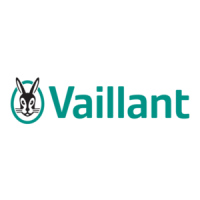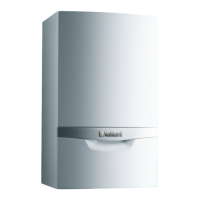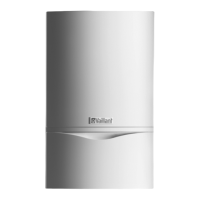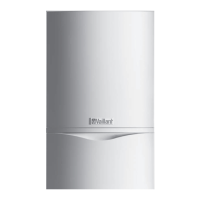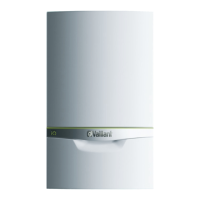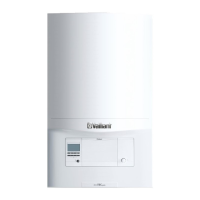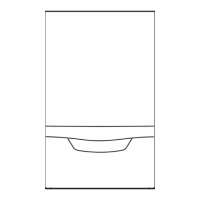
Do you have a question about the Vaillant ecoTEC plus VU 6/5-5 Series and is the answer not in the manual?
Defines the intended application of the heat generator and prohibits improper use.
Specifies professional training and knowledge required for installation and maintenance work.
Covers critical safety aspects like gas, flue gas, electricity, weight, and potential hazards.
Highlights the need to observe national regulations, laws, and specific standards for GB/IE.
Information on registering the product for warranty and customer service contact details.
Provides detailed specifications for various models including connections, gas rates, and dimensions.
Outlines performance data, efficiencies, and outputs for G20 and G31 gas models.
Details heating operation parameters and electrical requirements for different models.
Provides data on hot water performance and required connection specifications.
Explains CE marking compliance and information found on the product's identification plate.
Details where to find the serial number and provides an overview of product design elements.
Lists product article numbers, energy endorsements, and hot water association details.
Instructions for checking the delivered items and understanding product dimensions for placement.
Specifies suitable installation locations and essential spatial clearances required around the boiler.
Covers regulations, terminal positioning, and configuration for air/flue systems.
Procedures for safely removing and refitting the front casing and side sections.
Essential requirements regarding gas type, purging, and preparation steps before installation.
Detailed steps for correctly installing gas, water, and heating connections, including leak-tightness checks.
Instructions for connecting the condensate discharge pipe and installing the flue system.
Critical safety and procedural guidance for qualified electricians performing electrical connections.
Overview of product operation, accessing installer level, and using live monitor codes.
Mandatory steps for initial product start-up using installation assistants and test programs.
Critical checks for gas settings, water quality, and related parameters for optimal operation.
Procedures for filling and purging the heating system, including condensate trap and low-pressure prevention.
Adjustments for burner anti-cycling time, maintenance intervals, and pump output for system adaptation.
Essential steps and information to provide to the end user upon completion of installation and commissioning.
Outlines annual inspection requirements, preparation steps, and component checks.
Procedures for cleaning the heat exchanger, burner, condensate trap, and checking related components.
How to check and adjust the expansion vessel's pre-charge pressure and the heating system's filling pressure.
Final checks on heating water quality and overall product leak-tightness after maintenance.
How to interpret service messages, eliminate faults, and access the fault memory.
Detailed steps for replacing key components like the burner, fan, gas valve, and heat exchanger.
Procedures for safely decommissioning, recycling, and disposing of the product.
A table detailing required inspection and maintenance tasks and their intervals.
Provides an overview of installer level settings, diagnostic codes, and status codes.
Comprehensive list of fault codes, their causes, and troubleshooting measures.
Electrical wiring diagrams for various product configurations, power ratings, and modes.
The Benchmark Checklist and a flowchart for guiding the commissioning process.
